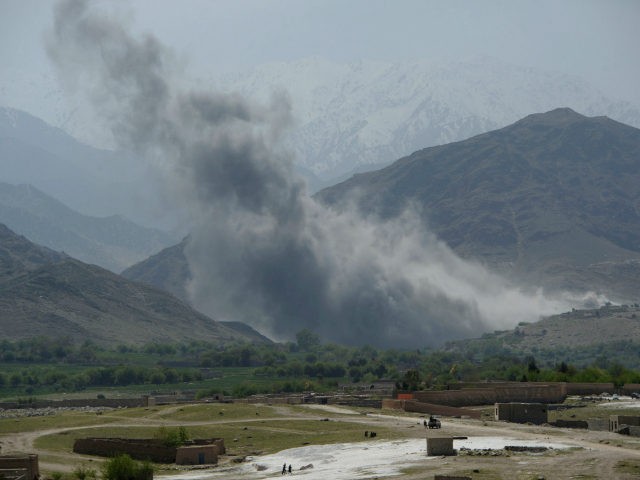President Donald Trump’s administration has ramped up the American air war in Afghanistan, dropping 1,634 bombs on terrorists so far this year, a figure that represents an increase of more than 65 percent from the 545 airstrikes launched during the same period in 2016, military data shows.
According to newly released U.S. Air Force figures, U.S. Central Command (CENTCOM) had dropped 1,634 munitions in Afghanistan as of June 30, marking a dramatic increase from the same period in 2015 (298) and the following year (545).
CENTCOM oversees U.S. military operations in Afghanistan and the Middle East.
The number of munitions dropped in Afghanistan this year has already exceeded the total 947 and 1,337 during all of 2015 and 2016, respectively.
Navy Capt. Bill Salvin, a spokesman for the U.S.-led mission in Afghanistan, indicated that the majority of the airstrikes launched this year have targeted the Taliban, reports the Washington Post (WaPo), adding that the U.S. military also attacked the Islamic State (ISIS/ISIL), but to a lesser extent.
By the time President Trump took office, the Taliban had gained control of more territory than during any other time since the U.S. military removed it from power in 2001.
Former President Barack Obama declared the U.S. combat mission over in Afghanistan at the end of 2014, a move that U.S. Air Force data reflects.
The number of airstrikes decreased nearly every full year after 2014, the U.S. Air Force figures, which covers American airstrikes between 2012 and the end of June of this year, show.
Last year, when it was evident there had been a Taliban resurgence after the U.S. combat mission ended, the number of munition dropped in Afghanistan increased once again.
The number of bombs launched so far this year is on track to come close to the 4,083 dropped in 2012. American military pilots dropped more bombs in 2012 than during any other year covered by the U.S. Air Force data.
By the end of 2012, the Obama surge troops had returned home, and his withdrawal plans were underway.
President Trump has granted the military broader authority to target jihadists in Afghanistan, allowing the Pentagon to set the number for the expected increase in the U.S. military’s footprint in the war-ravaged country.
On Tuesday, President Trump had lunch with American troops to find additional ideas for combating terrorists in Afghanistan.
The president told reporters he wants “to find out why we’ve been there for 17 years, how it’s going and what we should do in terms of additional ideas.”
“We have plenty of ideas from a lot of people, but I want to hear it from people on the ground,” he declared.
President Trump inherited a deteriorating security situation in Afghanistan from the previous administration.
Obama restricted the U.S. military’s ability to target the Taliban, the strongest terrorist group in the country. The Afghanistan-Pakistan region is home to the largest concentration of Islamic terrorist groups in the world, according to the U.S. military.
The U.S. Special Inspector General for Afghanistan Reconstruction (SIGAR), a watchdog agency, reported at the end of April that the insurgents, primarily the Taliban, controls or contests 40 percent of Afghanistan.

COMMENTS
Please let us know if you're having issues with commenting.